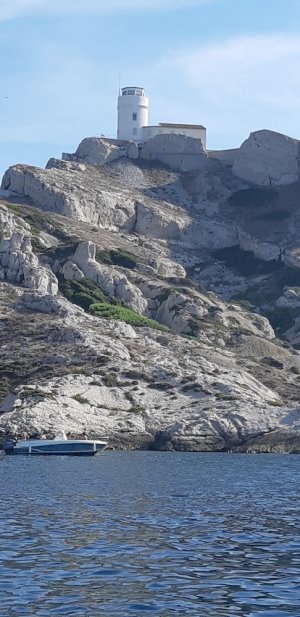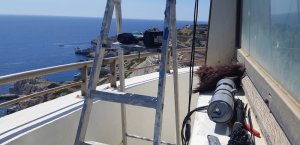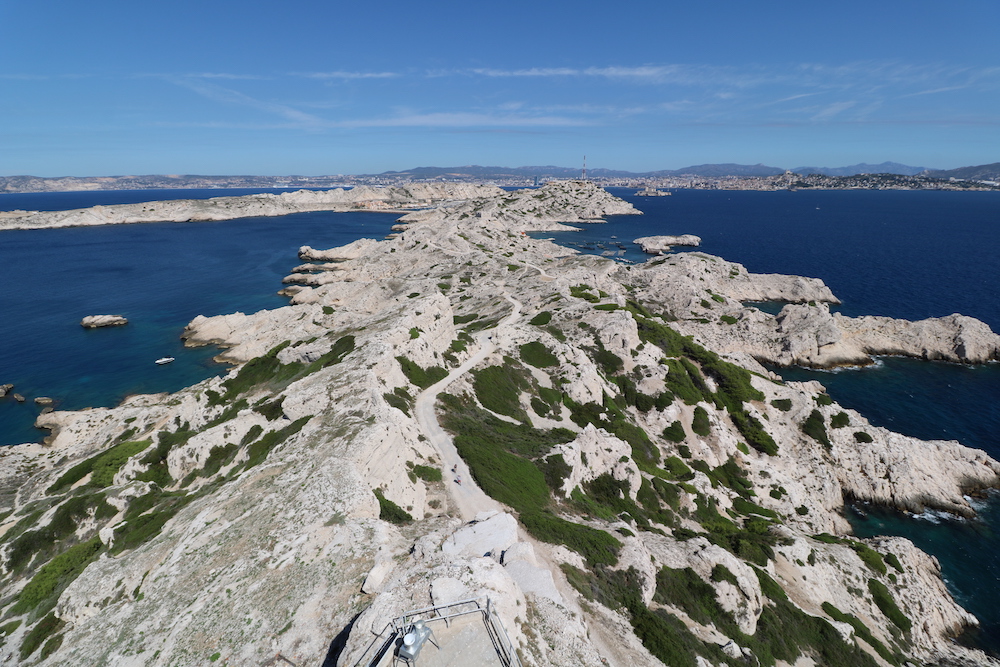Streambox1 Frioul
This revision is from 2023/03/29 17:21.
The microphone is situated on Pomegue Island which forms part of the Frioule archipelago just off the coast of Marseille. Placed at the summit of a semaphore tower, the microphone captures the sounds of the wind and the sea as well as seabirds – notably Cory’s shearwater and kestrels, footsteps of hikers on the gravel path and in the summer, human activity from the boats moored in the calanques below. Electricity the National Park and in the absence of a local area network, we are using a 3g modem. The binaural microphone is fixed to the eves of the semaphore tower.

The Calanques National ParK (PNC) is a biological reserve that covers the coastline from Marseille to Cassis, on land (85km2) and offshore (450km2). It’s missions are protection of the natural environment (plants and animals), protection against wildfire as well as educational activities and visitor reception. Founded in 2012 it is the first semi urban, land and sea national park in Europe. Researchers from the PNC are interested in monitoring the wildlife through the microphone as well as the evolution of the anthrophoni – the human audio presence and its influence and coexistence with the audio-sphere of other species.

We started working on the implementation of the first microphone by Locus Sonus earlier than programmed, however, it took more time and required more experimentation and adjustment than initially estimated. This is due to several factors:
- The implication of a national parc as a partner institution (le Parc National des Calanques) - we were very pleased to initiate this partnership which corresponds to the objectives of the Acoustic commons program, however, since the PNC is a protected area it meant that some administration was required to work out a contract and permissions to install the microphone.
- It was decided to install the microphone in a remote location - the Frioul Island off the coast of Marseille - which, while adding interest to the audio content, created some complications (transport).
- Extreme conditions (salt spray) and vandalism meant that we had to move the microphone to a less exposed location on the island.
- COVID19 restrictions.
The process was initiated during the technical workshop #1, several students and visiting members of Acoustic Commons were therefore able to take part. Visits to different areas of the national park were organised thanks to Lidwine Le Mire Pecheux, a researcher at the PNC. During these visits sound recordings were made and we engaged in a discussion concerning the viability, the cultural and scientific interest of each location. The final choice to put the microphone on Frioul Pomegue Island was based on acoustic qualities, the abundance of wildlife and the emblematique nature of the offshore island. To integrate the microphone in the landscape a prototype microphone-housing was carved from the local rock. The first iteration of the microphone was placed on the roof of a Second WW bunker. This location turned out to be unsuitable - too close to the visiting public and exposed to salt spray. After several maintenance visits, we asked and were granted permission to place the microphone at the summit of a semaphore tower. This has resolved the various issues and the microphone has now been permanently installed since August 2021. https://locus.creacast.com:9443/marseille_frioul.mp3

Main participants : PNC, ESAAIX - faculty and students, Ecole Nationale d'Art de Cergy - faculty and students, other members of Acoustic Commons.
Last changed 2023/03/29 17:24